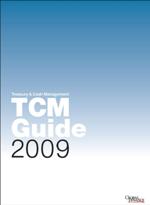By Anita Hawser
Europe Editor
 A lot of the traditional services cash management banks provided to their customers in the lead-up to the financial crisis around collections, liquidity, risk and working capital management are featuring more prominently in discussions between banks and their corporate customers in its wake. Where banks may have talked up a lot of these services in the past, customer appetite for them did not necessarily follow and it tended to be only the large, highly centralized corporate treasuries that opted for some of the more sophisticated solutions, particularly around liquidity and risk management.
A lot of the traditional services cash management banks provided to their customers in the lead-up to the financial crisis around collections, liquidity, risk and working capital management are featuring more prominently in discussions between banks and their corporate customers in its wake. Where banks may have talked up a lot of these services in the past, customer appetite for them did not necessarily follow and it tended to be only the large, highly centralized corporate treasuries that opted for some of the more sophisticated solutions, particularly around liquidity and risk management.
Fast-forward to 2009. Banks are now finding corporates of all sizes want to know how they can preserve their cash balances and better manage their liquidity. Not only that, risk management is at the top of the treasurer’s agenda; not just interest rate and FX risk management, but counterparty, credit and liquidity risk. Most transaction banks have reported substantial increases in their trade and treasury revenues as corporates seek to reduce counterparty risk using traditional letters of credit, which up until recently had been a declining business for most banks. This ties in with an increased focus by treasurers and CFOs on the financial supply chain, where unlocking capital trapped in inefficient accounts payable and accounts receivable processes is something most major corporations are not just talking about or hearing about from their banks, but are actually looking to put into practice.
Tighter credit is also prompting treasurers to review their banking relationships. The day when businesses would rely on a single European banking provider or global cash management bank is long gone it seems, as corporates look to secure relationships with more than one bank, not only for credit purposes, but also for enhanced risk management. Yet, while the banks that were relatively unscathed by the credit crunch have sought to increase their market share vis-à-vis those that sought government bailouts, market share does not seem to have shifted significantly. Government-assisted banks claim they remain committed to the business and continue to invest in it. However, they still have some convincing to do when it comes to their competitors and some corporate treasurers who are uncertain about these banks’ long-term strategy and their ability to resist pressures to resort to a more domestic focus, which some predict will be a condition of receiving government assistance. On a regional level, however, and among mid- and lower-tier corporate treasurers, the game is anybody’s and regional banks, particularly those in Asia, are finding that they are winning more business that historically might have gone to foreign banks.



